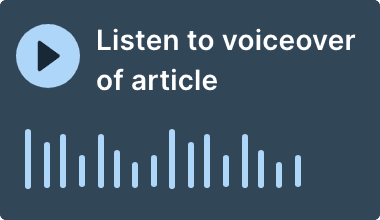The first quarter of 2024 has witnessed a sea change of atmosphere in financial markets which has not necessarily been reflected in comments by observers, investors and, of course, the media. The ineluctable downward shift in world inflation, apart from stubborn corners of less important or influential economies, have been resisted by this group of investors. One notorious market commentator even described the US bond market, the largest and most important benchmark in the world, as wearing “rose-tinted glasses” as yields have refused to stage another upward lurch, as widely expected by economists. The same applies to most other world bond markets as discussion rages from technical issues such as the sharp rise in government borrowing requirements to the drying up of liquidity and demand for fixed income by investors.
What has been overlooked is that the sharp increase in the cost of money, designed for the purpose of preventing inflation from spiralling out of control, had the desired effects of: increasing consumer savings to the detriment of consumption; engendering a material shrinkage of credit availability in some world economies; and the placing on hold of capital expenditure programs to prepare for the future. The result of these and other side effects was the expected change in the direction of inflation and its expectations from east to west.
Another point worth mentioning is the secondary effect of the rate hikes. For example, while the high proportion of fixed rate mortgages in the US means that the hit from rates has not been felt yet, the American tradition of unlocking home equity by borrowing against the value of the home has collapsed, denting consumer spending from a different angle.
In the same way, while there was much ado about the aftermath of rate increases on the commercial real estate market for obvious reasons, little was reported on the effects of higher rates on venture financing and, as a result, on the early stages biotech funding.
In the case of Germany, the country has once again gained the prize for the sick man of Europe. Although there are many reasons, economic and especially political, why there is more than a grain of truth in this description, however reputationally damaging, it was not reflected in share and bond prices. As witnessed in the past, the German DAX index has reached record levels as bond yields ground and continue to grind lower, confounding the battalion of negative observers and operators.
All the while, many central bankers across developed markets have pushed back expectations of rate cuts, at least until most recently, including the usual suspects, from the Federal Reserve to the European Central Bank. Few and far between have been those stating that wage costs have taken a break from their upward trajectory, while commodity inflation has shrugged off the plethora of bad news from trade disruptions to political upheaval in the Middle East and Russia. Bond markets, on the other hand, have once again displayed their independence.
This should not come as a surprise. The US government bond market, for example, capitalized at $26.8 trillion,1 was never likely to be influenced by utterances from central bankers whose intelligence and often experience is not called into question but who do not enjoy the label of being “mysterious”, as do financial markets. As mere human beings, and acting as a group, their role is not to look across the valley and discount future earnings at a prevailing rate. Their role is to keep prices stable and prevent banking excesses from wreaking the sort of havoc that occurs from time to time if bank managers are not subjected to strict discipline.
This leaves investors scratching their heads at the resilience of world stock markets whose price rises in the last six months or so have been supported by the same resilience as prevailed, and prevails, in bond markets. Since they go hand in hand, this should come as no surprise to experienced investors who have seen this scenario play out multiple times in the past decades and who have the sense of concentrating on the underlying businesses in which they invest, rather than on the short-term vagaries of often emotional investors. To be sure, various fads will carry the day from time to time, such as high-yielding companies of mediocre quality; or momentum-driven share prices lurching upwards as short-term players cannot be seen to be missing out on rallies, as has been the case with the Magnificent Seven in the US stock market. But markets will not remain fooled for long. Tittle-tattle tales have short legs.
Where does this leave the Quality Growth investor?
The rules for Quality Growth investing do not change over time. What counts is diligence, knowledge and ongoing investigation of such a portfolio. These investors will distinguish between the non-essential and the essential elements of this approach – and concentrate on the latter. Some would call this separating the noise constantly arising from busy financial markets, from the signals inherent in producing superior returns with inferior risks.
This message is perennial and applies today as much as always.
P. Seilern
March 29th, 2024
1US Treasury Securities Statistics – SIFMA, https://www.sifma.org/resources/research/us-treasury-securities-statistics/
This is a marketing communication / financial promotion that is intended for information purposes only. Any forecasts, opinions, goals, strategies, outlooks and or estimates and expectations or other non-historical commentary contained herein or expressed in this document are based on current forecasts, opinions and or estimates and expectations only, and are considered “forward looking statements”. Forward-looking statements are subject to risks and uncertainties that may cause actual future results to be different from expectations.
Nothing contained herein is a recommendation or an offer or solicitation for the purchase or sale of any financial instrument. The material is not intended to provide, and should not be relied on for, accounting, legal or tax advice, or investment advice. The content and any data services and information available from public sources used in the creation of this communication are believed to be reliable but no assurances or warranties are given. No responsibility or liability shall be accepted for amending, correcting, or updating any information contained herein.
Please be aware that past performance should not be seen as an indication of future performance. The value of any investments and or financial instruments included in this website and the income derived from them may fluctuate and investors may not receive back the amount originally invested. In addition, currency movements may also cause the value of investments to rise or fall.
This content is not intended for use by U.S. Persons. It may be used by branches or agencies of banks or insurance companies organised and/or regulated under U.S. federal or state law, acting on behalf of or distributing to non-U.S. Persons. This material must not be further distributed to clients of such branches or agencies or to the general public.
Get the latest insights & events direct to your inbox
"*" indicates required fields





